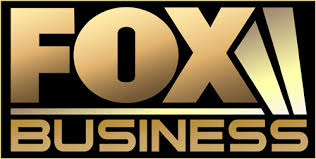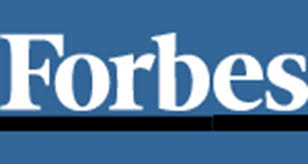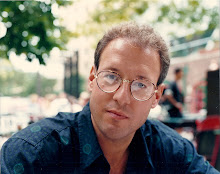 Less marketing and branding and more leadership and vision.
Less marketing and branding and more leadership and vision.Over the past year many have told me there's no time in the quest for consumer ears and eyeballs to pay attention to the quaint now backburner concept of positioning and differentiating a product. "I have the next FaceBook to find!" In this hustle and bussle world I want everyone to take the time when you are frustrated in line, angry or short at another to remember that respect for others is NOT something that you have to do. It is something that you GET to do. Be thankful that you have someone else that you are doing something for - a new opinion or option to consider. It is a better medicine than any pill, beverage or pharmafood or nutriceutical.
 At this time of year have the epiphany of realizing that your best present to yourself is to make yourself a better you. Everyone around you will capture the spirit. Why make you a better you? Take this lesson from mentor John Maxwell; take and apply it in your daily, personal and business life. Everyone needs to increase their LAW OF THE LID. This "insight" is my gift to you this year. I live by it.
At this time of year have the epiphany of realizing that your best present to yourself is to make yourself a better you. Everyone around you will capture the spirit. Why make you a better you? Take this lesson from mentor John Maxwell; take and apply it in your daily, personal and business life. Everyone needs to increase their LAW OF THE LID. This "insight" is my gift to you this year. I live by it.Increase your "Law of the Lid"
You can find plenty of smart, talented, successful people who are able to take their business only so far because of the limitations of their leadership and vision. Your organization's ability to grow is directly tied to your ability and desire to grow personally in both capacities. That is the Law of the Lid. If you want to reach new level of effectiveness in your job, raise your lid. If you want to grow your company, grow your lid. If you want to increase shareholder value, increase your lid.
You can find plenty of smart, talented, successful people who are able to take their business only so far because of the limitations of their leadership and vision. Your organization's ability to grow is directly tied to your ability and desire to grow personally in both capacities. That is the Law of the Lid. If you want to reach new level of effectiveness in your job, raise your lid. If you want to grow your company, grow your lid. If you want to increase shareholder value, increase your lid.
Here's a story that demonstrates The Law of the Lid. Is this you?
In 1930, two young brothers named Dick and Maurice moved from New Hampshire to California in search of the American Dream. They had just graduated high school, and they saw few opportunities back home. So they headed straight for Hollywood where they eventually found jobs on a movie studio set. Soon, their entrepreneurial spirit and interest in the entertainment industry prompted them to open a theatre in Glendale, five miles northeast of Hollywood. Despite all of their efforts, the brothers just couldn't make the business profitable. In the four years they ran the theatre, they weren't able to generate enough money to pay $100 a month rent.
The brothers’ desire for success was strong, so they kept looking for better business opportunities. They opened a small drive-in restaurant in Pasadena, just east of Glendale. People in southern California had become very dependent on their cars, and the culture was changing to accommodate that, including its businesses. Drive-in restaurants were a phenomenon that sprang up in the early thirties, and they were becoming very popular. Rather than being invited into a dining room to eat, customers would drive into a parking lot around a small restaurant, place their orders with carhops, and receive their food on trays right in their cars. The food was served on china plates complete with glassware and metal utensils. It was a timely idea in a society that was becoming faster paced and increasingly mobile.
Dick and Maurice's tiny drive-in restaurant was a great success, and in 1940, they decided to move the operation to San Bernardino, a working-class boomtown fifty miles east of LA. They built a larger facility and expanded their menu from hot dogs, fries and shakes to include barbecue beef and pork sandwiches, hamburgers and other items. Their business exploded. Annual sales reached $200,000, and the brothers found themselves splitting $50,000 in profits every year - a sum that put them in the town's financial elite.
In 1948, their intuition told them that times were changing, and they made modifications to their restaurant business. They eliminated the carhops and started serving only walk-up customers. And they also streamlined everything. They reduced their menu and focused on selling hamburgers. They eliminated plates, glassware and metal utensils, switching to paper products instead. They reduced their costs and the prices they charged customers. They also created what they called The Speedy Service System. Their kitchen became like an assembly line, where each person focused on service with speed. Their goal was to fill each customer's order in 30 seconds or less. And they did. By the mid 1950's, annual revenues hit $350,000, and by then, Dick and Maurice split net profits of about $100,000 per year.
Who were these brothers? If you drove to their small restaurant on the corner of Fourteenth and E Streets in San Bernardino, on the front of the small octagonal building hung a neon sign that said simply McDonald's Hamburgers. Dick and Maurice had hit the great American jackpot, and the rest as they say is history, right? Wrong. The McDonald's never went any further because their weak leadership put a lid on their ability to succeed.
It's true the brothers were financially secure. Theirs was one of the most profitable restaurant enterprises in the country. Their genius was in customer service and kitchen organization. Their talent led to the creation of a new system of food and beverage service. In fact, their talent was so widely known in food service circles that people started writing them and visiting from all over the country to learn about their methods. At one point, they received as many as 300 calls and letters in one month.
That led them to the idea of marketing the McDonald's concept. The idea of franchising restaurants wasn't new and to the McDonald brothers it looked like a way to make money without having to open another restaurant themselves. In 1952 they got started, but their effort was a dismal failure. The reason was simple. They lacked the vision and leadership necessary to make it effective. Dick and Maurice were good restaurant owners. They understood how to run a business, make their systems efficient, cut costs and increase profits. They were efficient managers. But they were not leaders. Their thinking patterns clamped a lid down on what they could do and become. At the height of their success, Dick and Maurice found themselves smack against the Law of the Lid.
In 1954, the brothers partnered with a leader named Ray Kroc. Kroc had been running a small company he founded, which sold machines for making milk shakes. He knew about McDonald's. Their restaurant was one of his best customers. And as soon as he visited the store, he had a vision of its potential. In his mind he could see the restaurant going nationwide in hundreds of markets. He soon struck a deal with Dick and Maurice, and in 1955, he formed McDonald's Systems, Inc. (later called the McDonald's Corporation). Kroc immediately bought the rights to a franchise so that he could use it as a model and prototype to sell other franchises. Then he assembled his team to build an organization and make McDonald's a nationwide entity. He recruited and hired the sharpest people, and as his team grew in size and ability, his people developed additional recruits with leadership skill.
At first Kroc sacrificed much. Though in his mid-fifties, he worked long hours, and eliminated many frills at home including his country club membership. During his first eight years he took no salary and personally borrowed money from the bank and against his life insurance to cover the salaries of key people he wanted on the team. His sacrifice and leadership paid off. In 1961, Kroc bought exclusive rights to McDonald's for $2.7 million and proceeded to turn it into an American institution and global entity. The lid in the life and leadership of Ray Kroc was obviously much higher than that of his predecessors.
In the years Dick and Maurice attempted to franchise McDonald's they managed to sell only 15 franchises, only 10 opened restaurants. Their limited leadership and vision were hindrances. For example, their first franchisee, Neil Fox of Phoenix, told the brothers he wanted to call his restaurant McDonald's. Dick’s response was, "What...for? McDonald's means nothing in Phoenix?"
On the other hand, the leadership lid in Ray Kroc's life was sky high. Between 1955 and 1959, Kroc opened 100 restaurants. Four years later, there were 500 McDonald's. Today, the company has opened over 21,000 stores in over 100 countries. Leadership ability - or more specifically the lack of leadership ability - was the lid on the McDonald brothers’ leadership effectiveness.











No comments:
Post a Comment